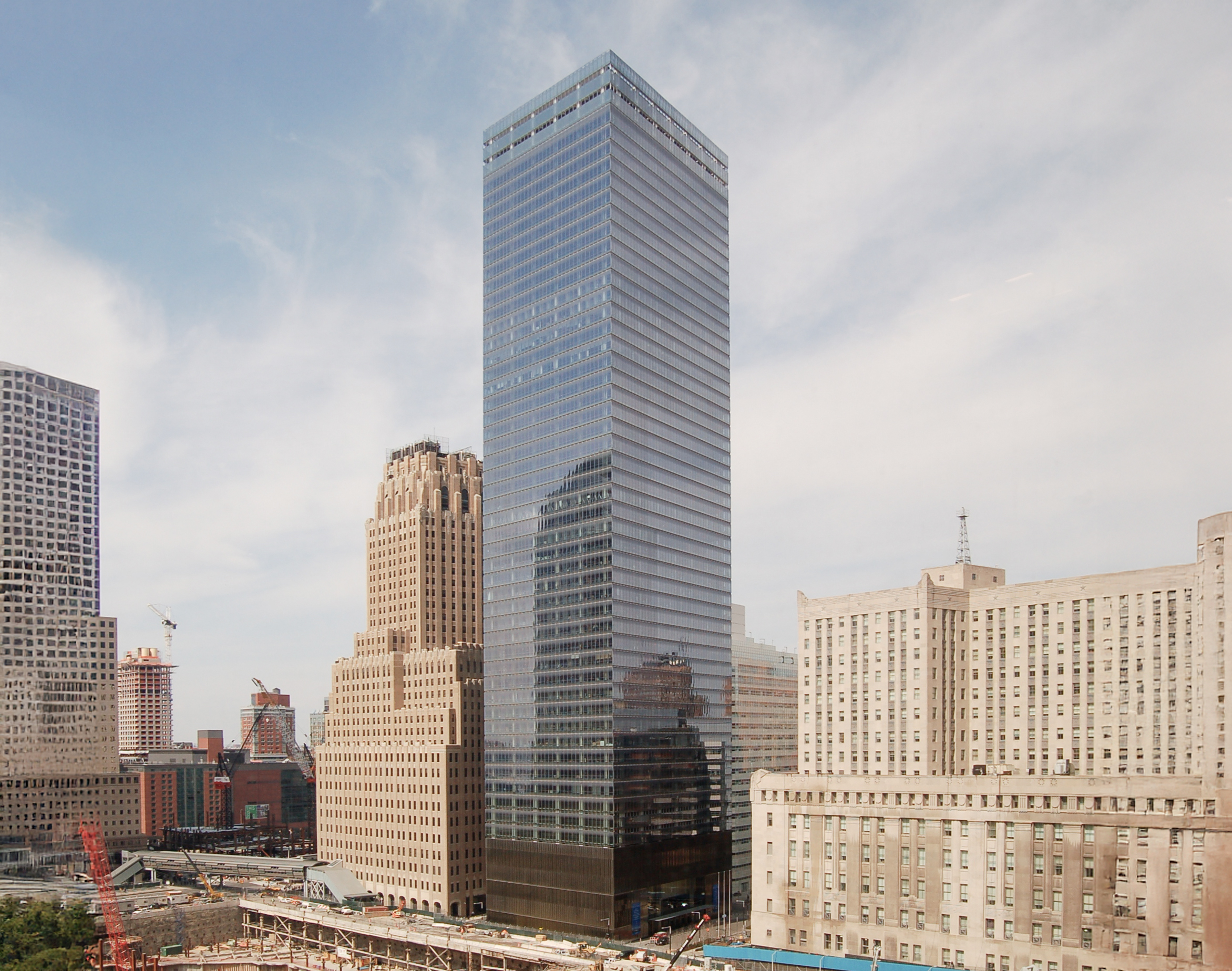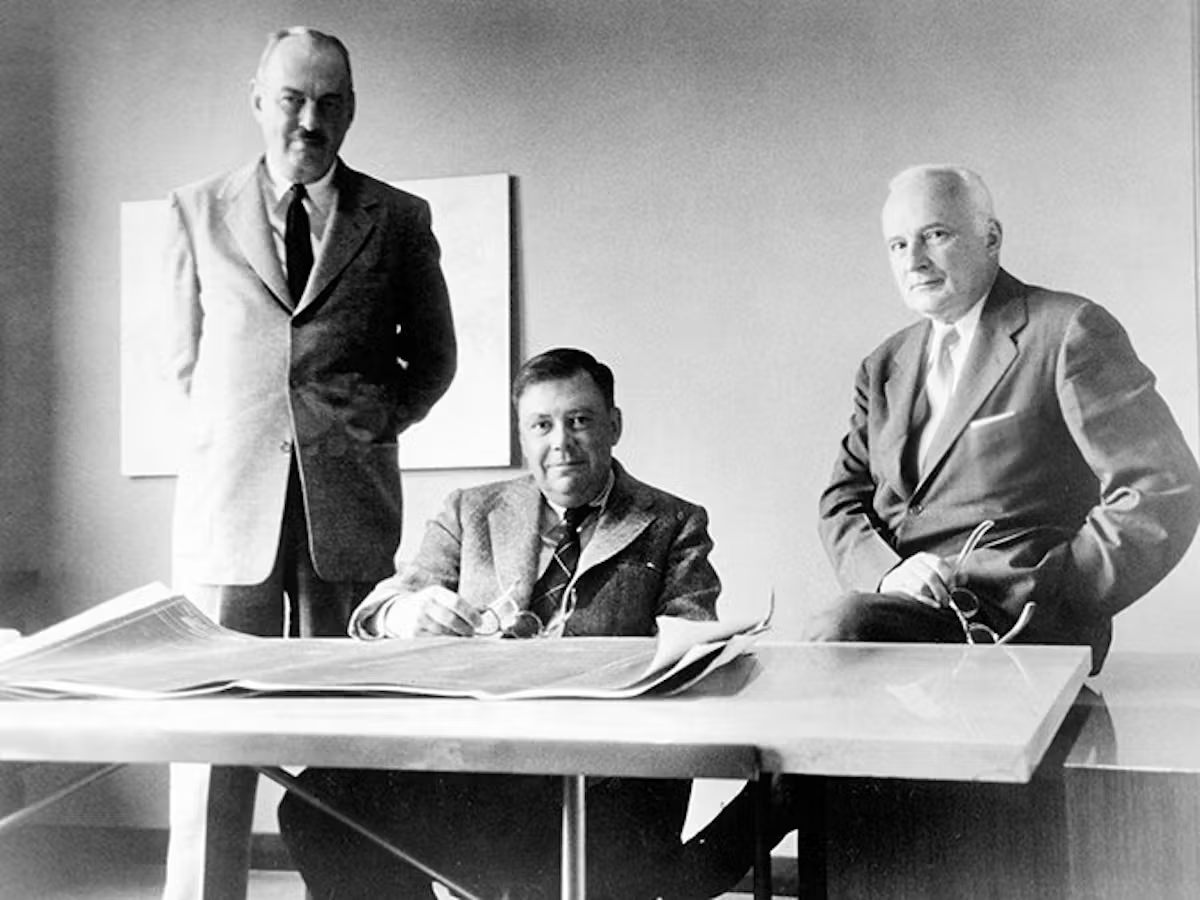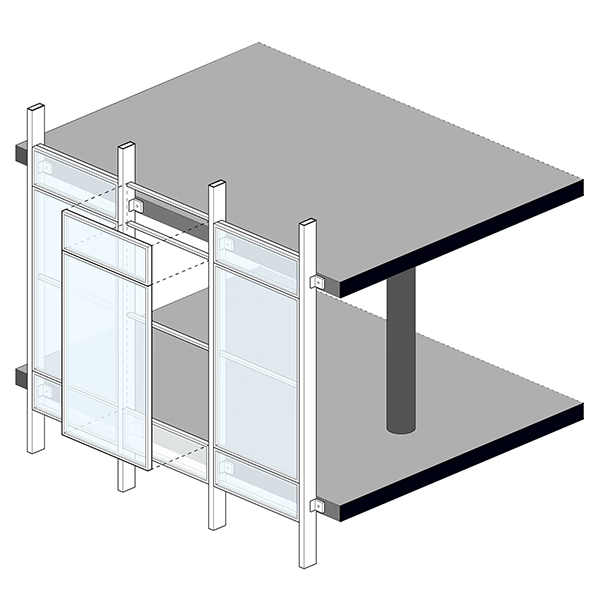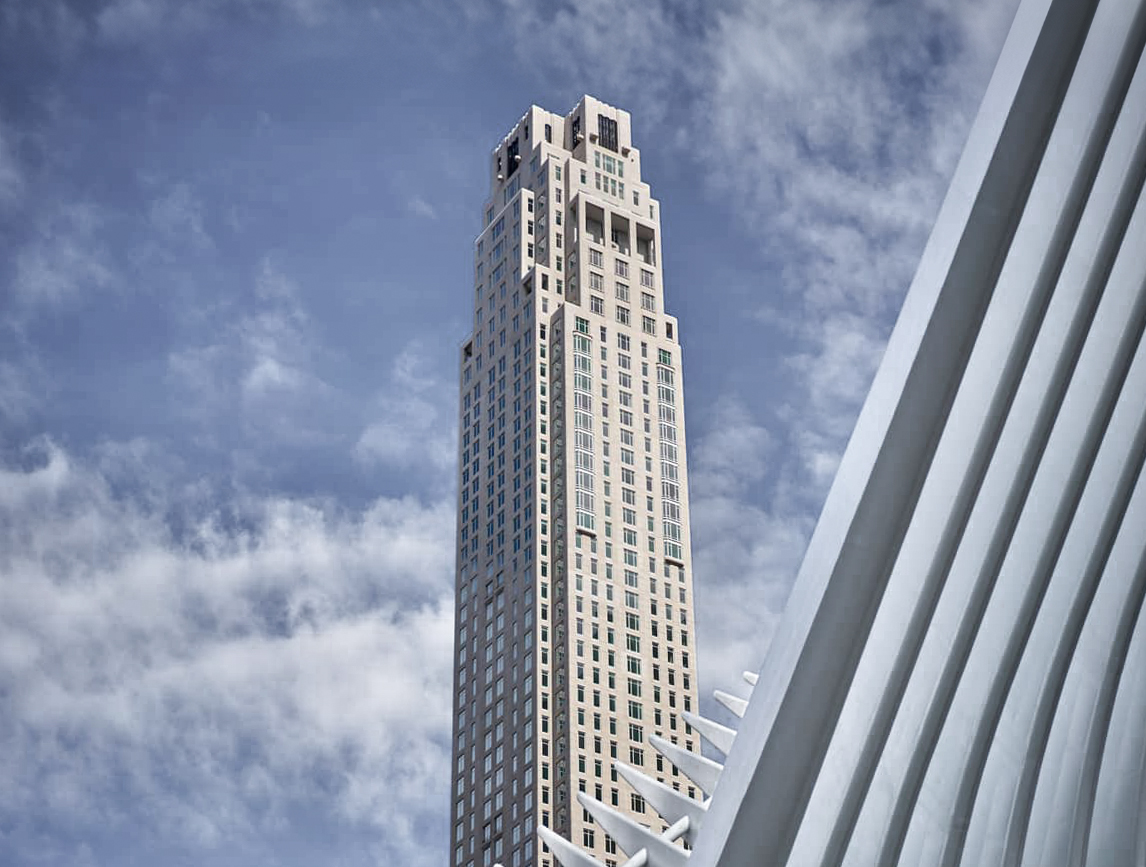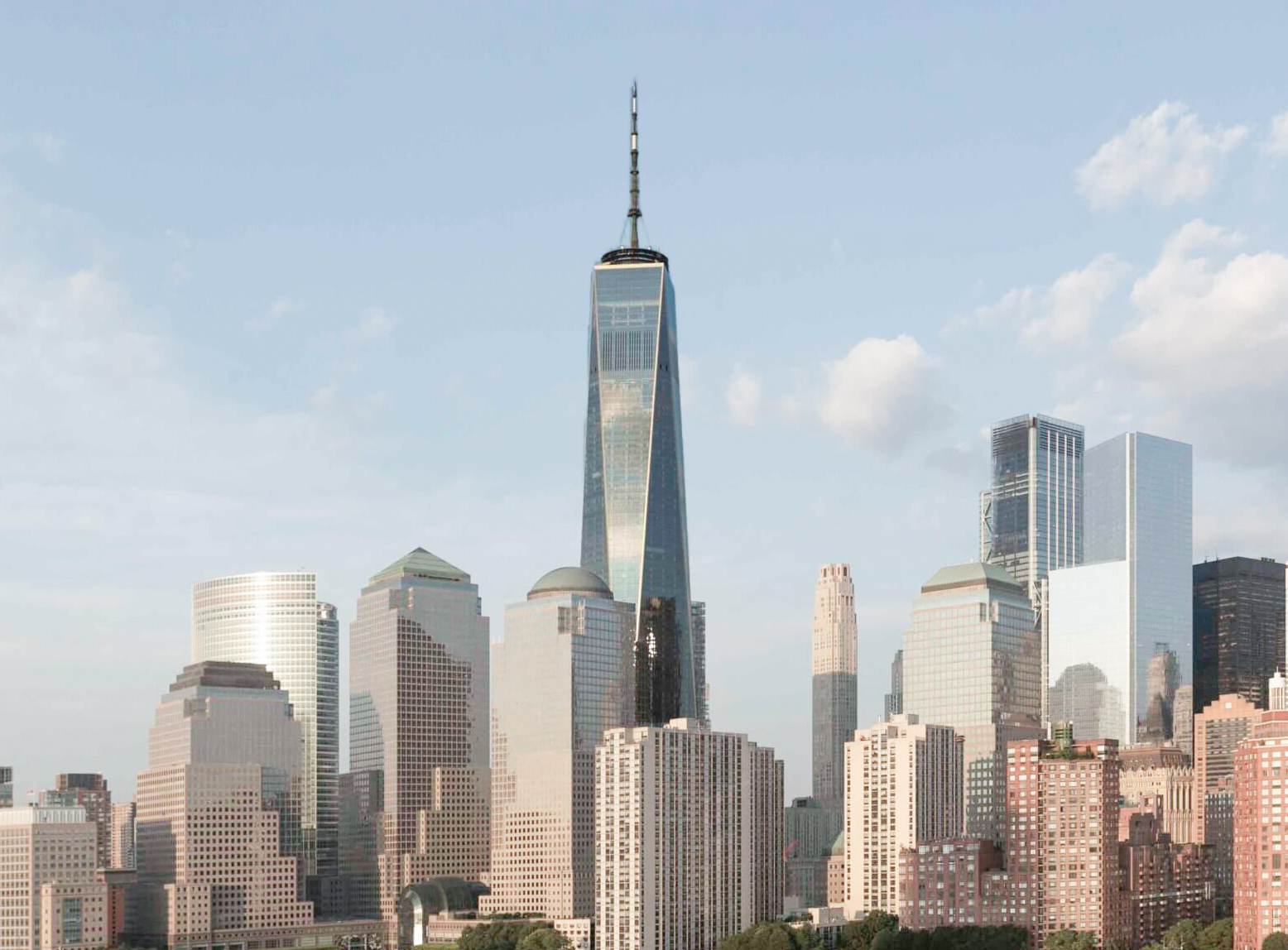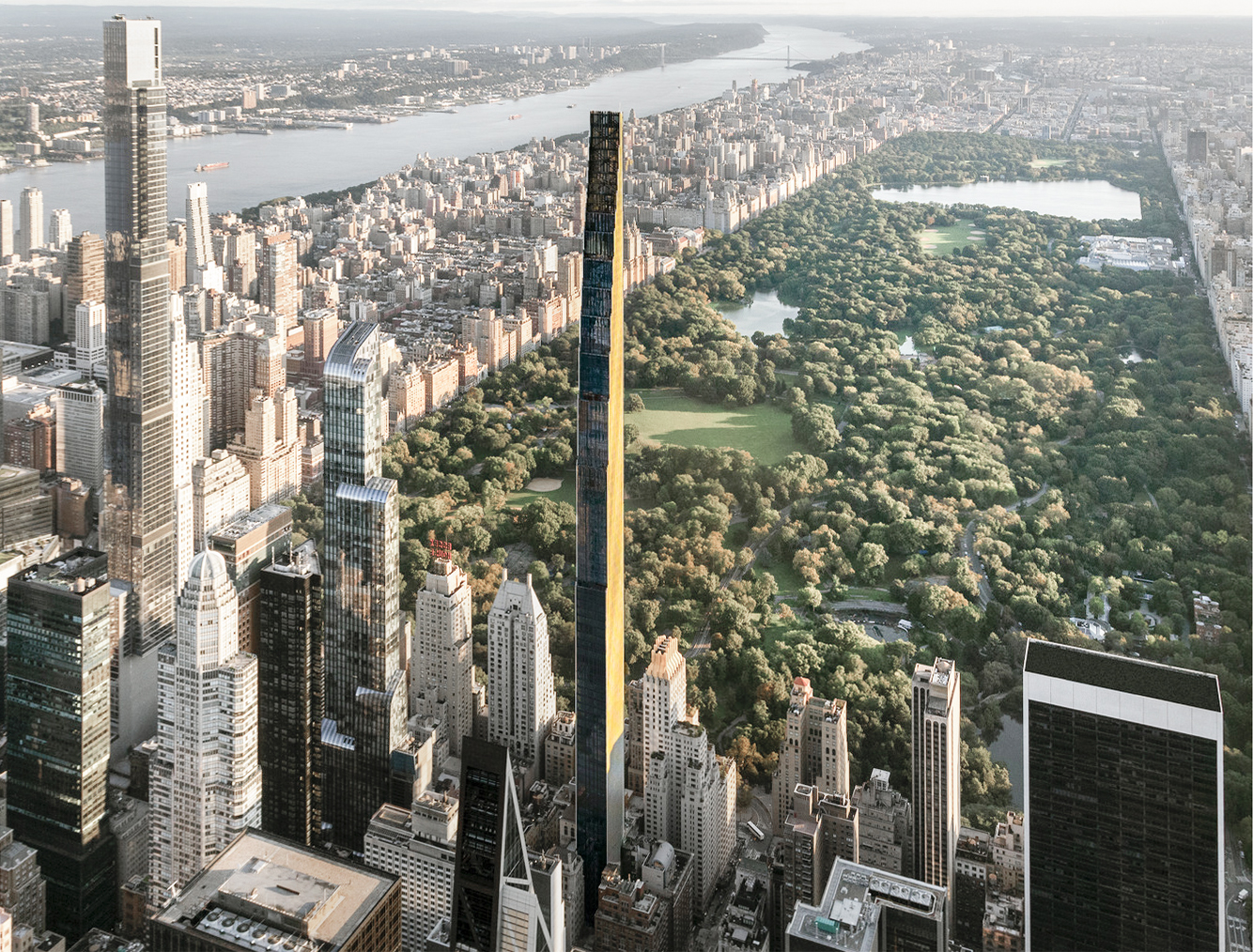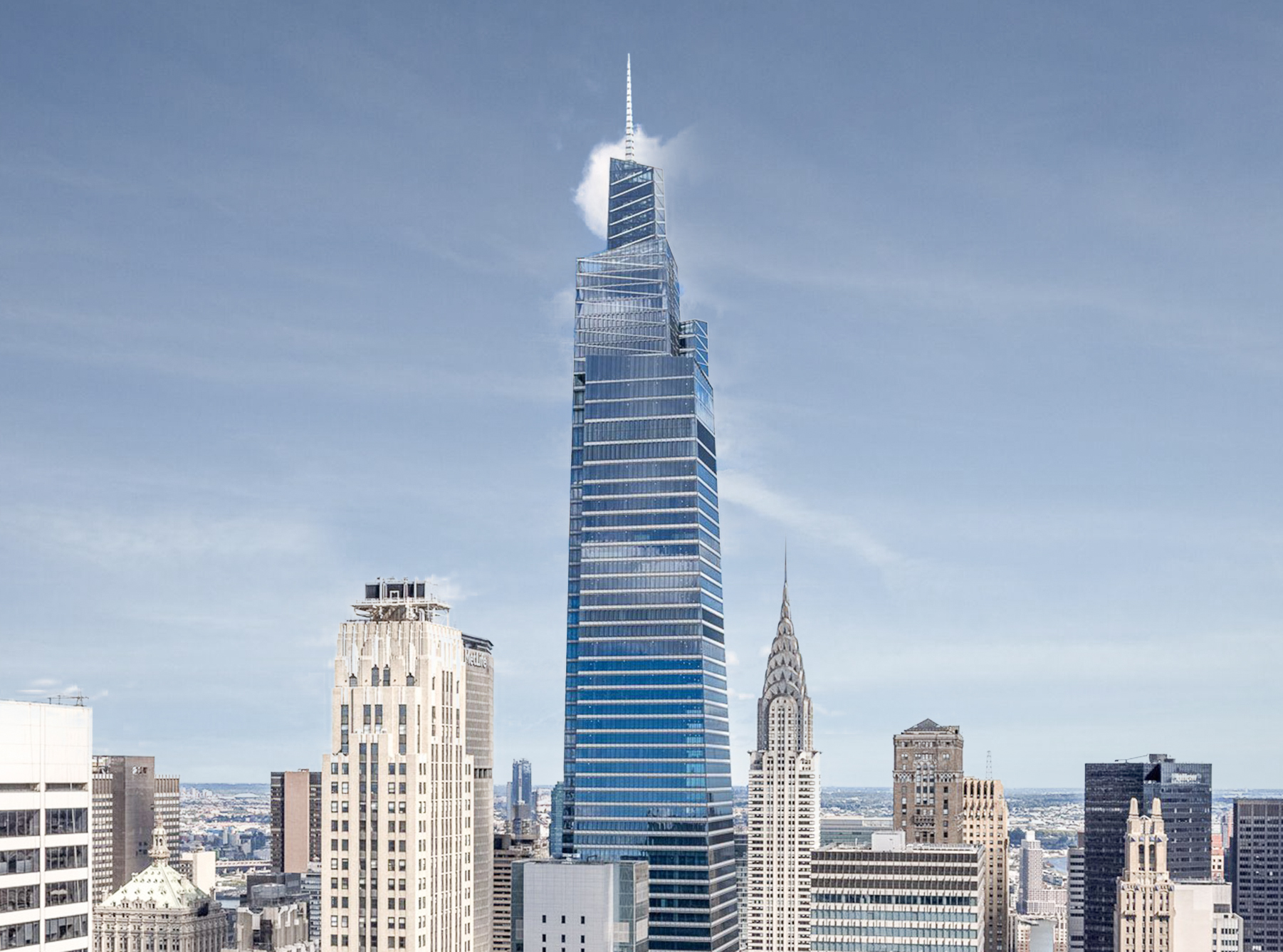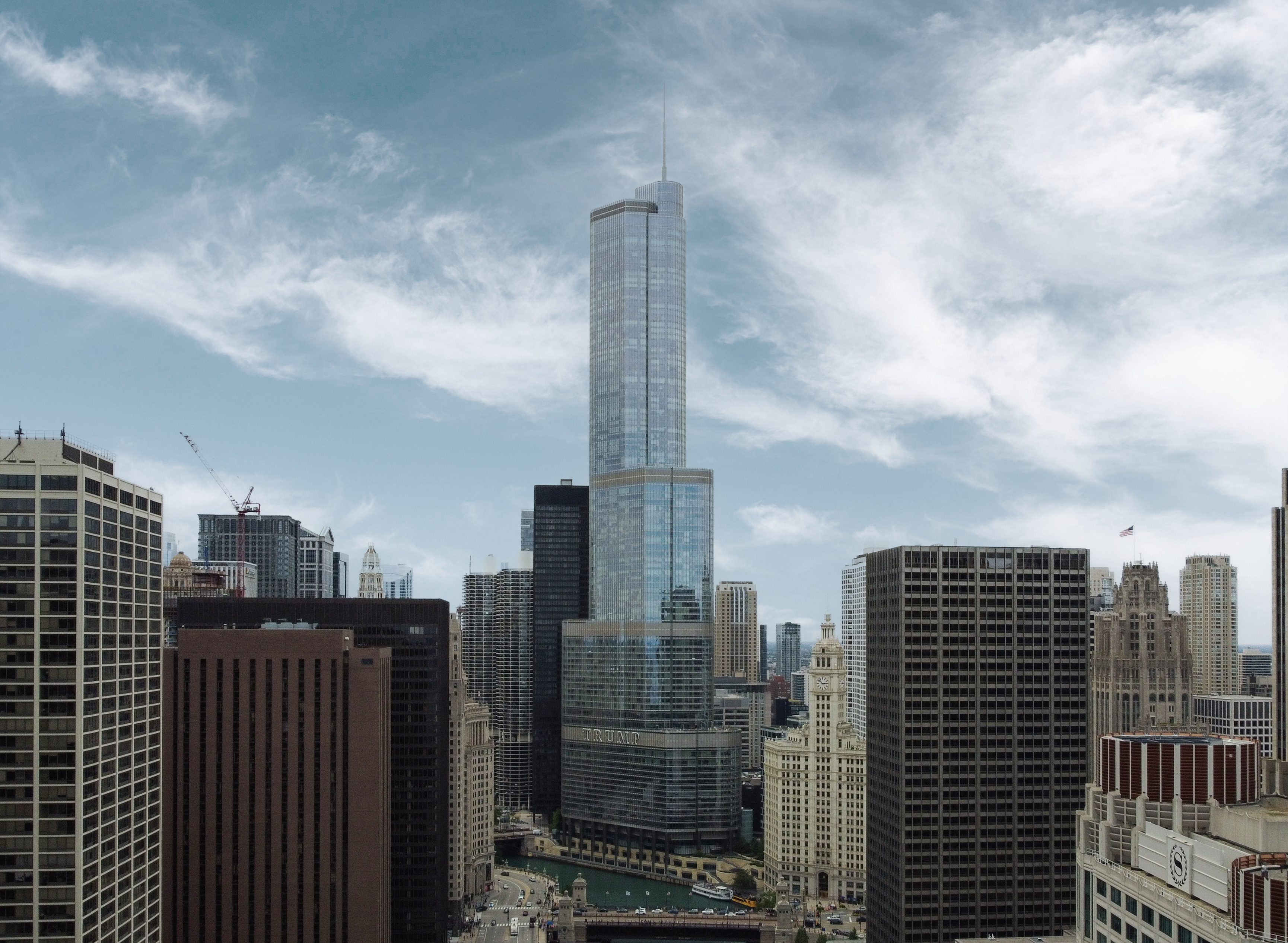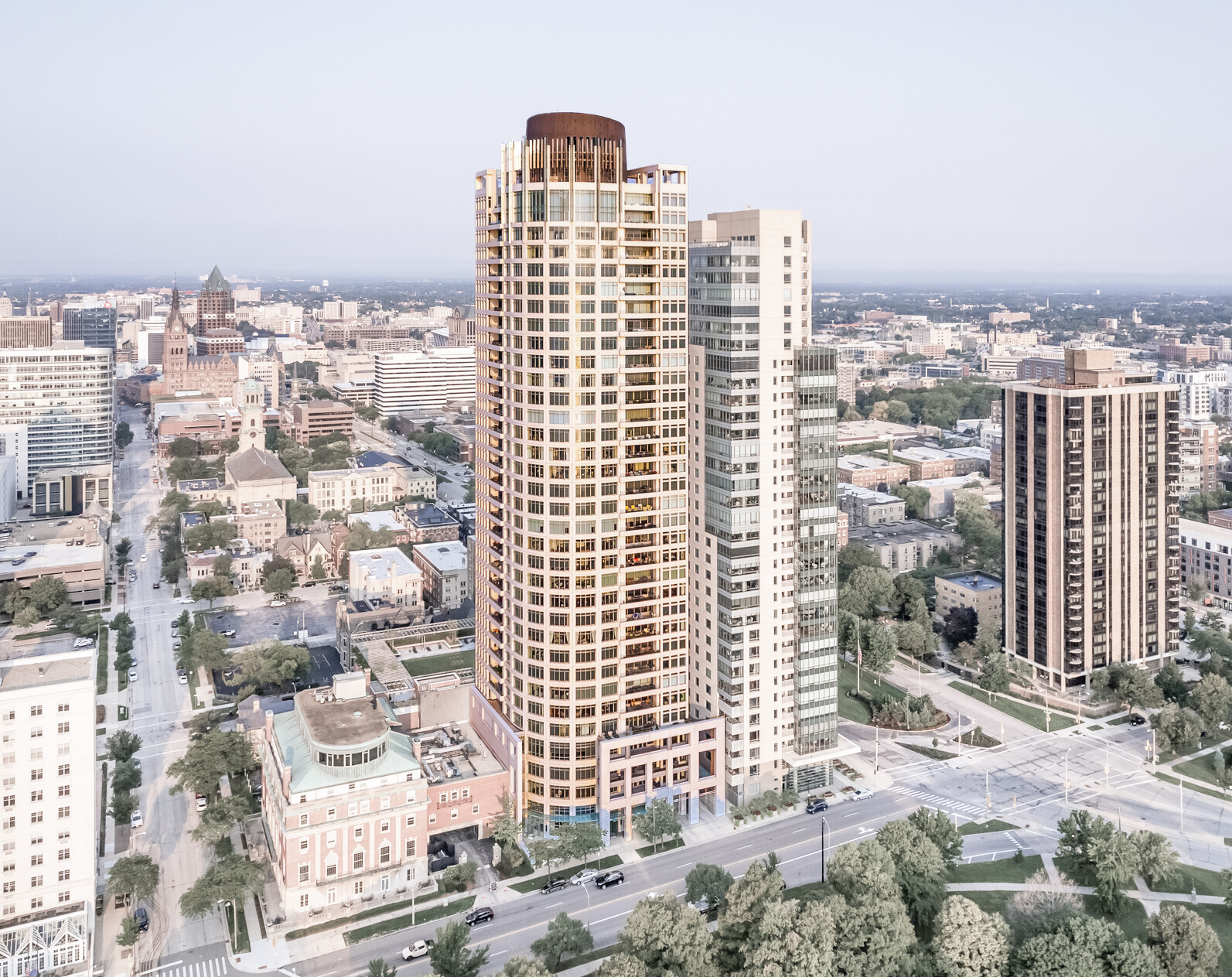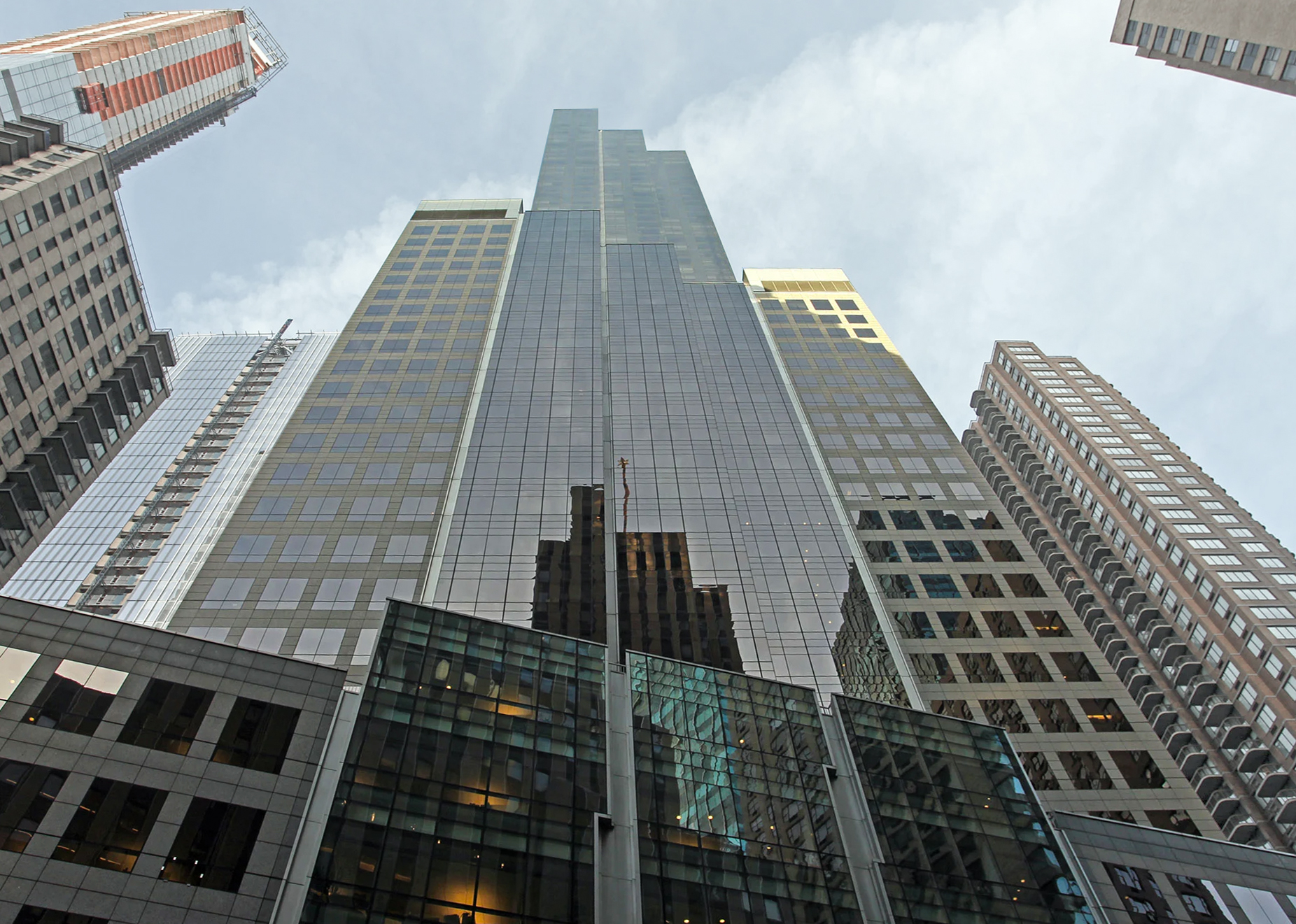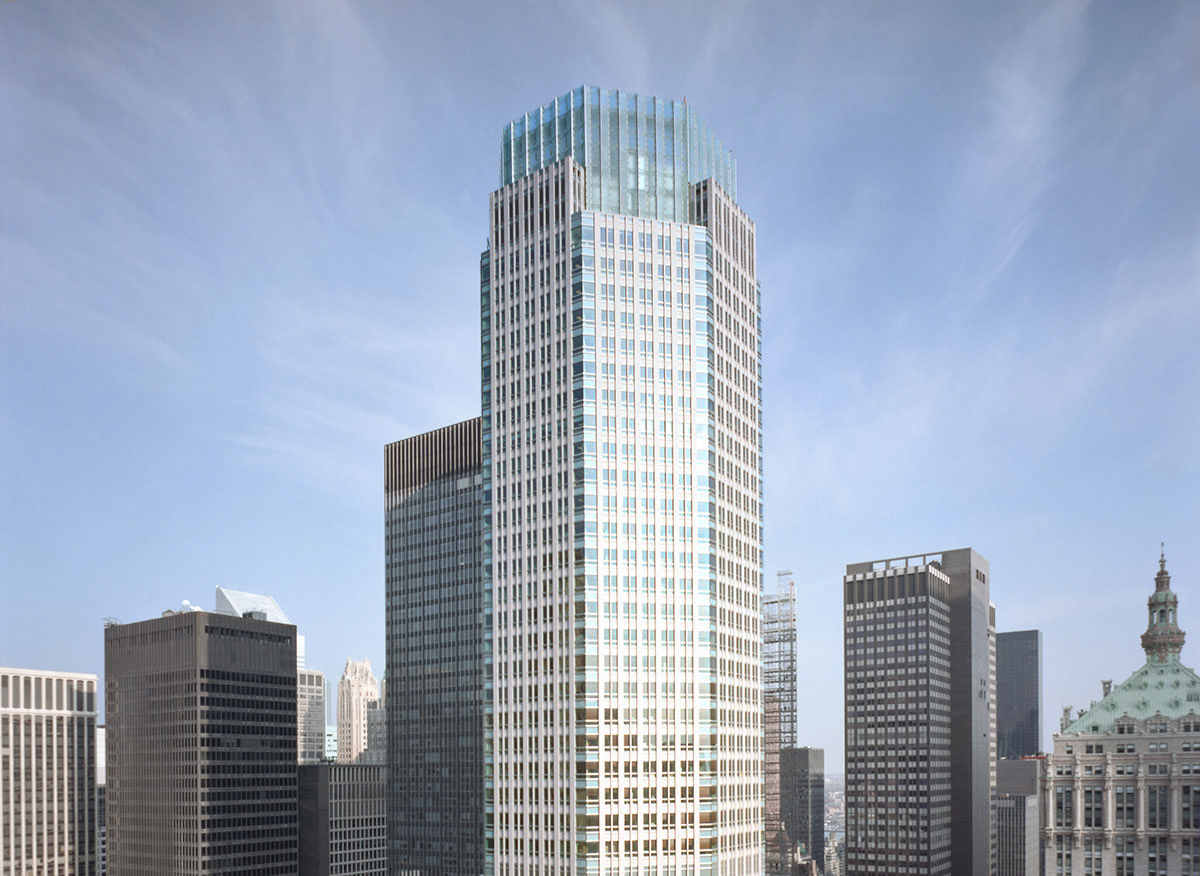The 7 World Trade Center is a Contemporary skyscraper designed in 2002 by Skidmore, Owings & Merrill, with David Childs as lead architect, and built between 2002 and 2006, for a reported $700 million dollars, in New York, NY.
Its precise street address is 250 Greenwich Street, New York, NY. You can also find it on the map here.
The 7 World Trade Center has received multiple architecture awards for its architectural design since 2006. The following is a list of such prizes and awards:
- AIA Architecture Merit Award in 2006
- MASterworks Award in 2008
The new 7 World Trade Center was built on the same site as the original building, which was damaged by debris from the Twin Towers and by internal fires until its collapse on the afternoon of September 11, 2001, following the tragic terrorist attack. It was the third building to collapse and the first in the new World Trade Center complex to be inaugurated..
